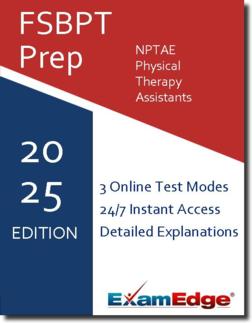NPTAE Practice Tests & Test Prep - Blogs
Based on 32 Reviews
- Real Exam Simulation: Timed questions and matching content build comfort for your NPTAE Physical Therapy Assistants test day.
- Instant, 24/7 Access: Web-based National Physical Therapy Assistants Examinations practice exams with no software needed.
- Clear Explanations: Step-by-step answers and explanations for your FSBPT exam to strengthen understanding.
- Boosted Confidence: Reduces anxiety and improves test-taking skills to ace your National Physical Therapy Assistants Examinations (NPTAE).



